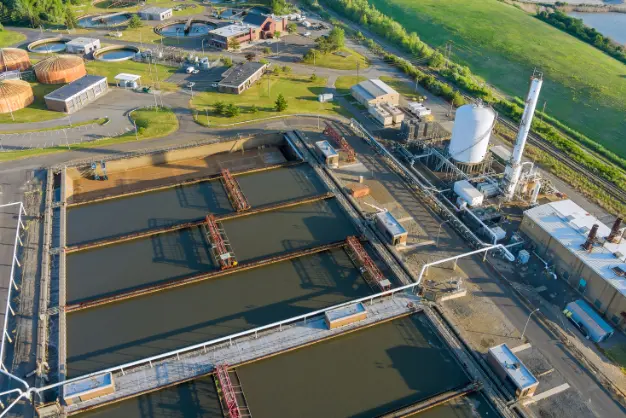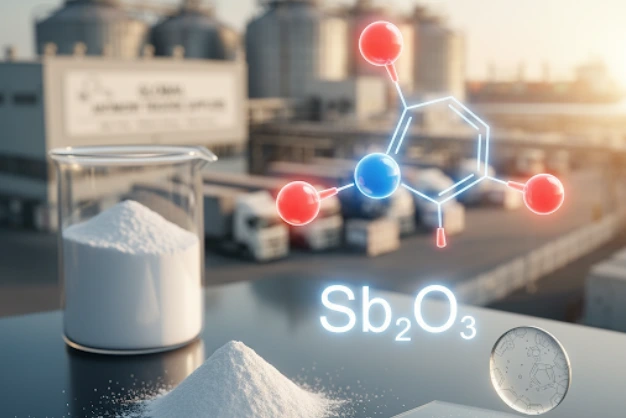TABLE OF CONTENTS
TABLE OF CONTENTS
What is Aeration in Water Treatment?
Aeration plays a crucial role in both the water treatment process for drinking water and wastewater treatment. In simple terms, aeration involves introducing air into water to support biological treatment, improve water quality, and remove unwanted contaminants. But what is aeration in water treatment, exactly, and why is it so vital? This comprehensive guide delves into the mechanics, purposes, and significance of aeration, offering clear insights for industry professionals and curious minds alike.
What is the role of Aeration in Water Treatment?
Aeration in water treatment is a process that adds oxygen to water, which is essential for biological filtration systems. The purpose of aeration in water treatment is to promote the growth of aerobic microorganisms that break down organic matter and pollutants in the water. By increasing the oxygen content, aeration helps:
- Reduce Contaminants: It accelerates the breakdown of organic pollutants.
- Enhance Oxygenation: Ensures that water supports life, especially in processes like wastewater treatment.
- Control Odor: Removes gases like hydrogen sulfide, which can create unpleasant smells.
- Improve Water Quality: It’s vital for improving the clarity and purity of drinking water.
What is an Aerator in a Water Treatment Plant?
An aerator in a water treatment plant is a device used to introduce air or oxygen into water. It is often a large-scale mechanical or diffused system designed to facilitate the aeration process. Aerators can be categorized into:
- Mechanical Aerators – These physically agitate water to increase surface area contact with air.
- Diffused Aerators – These release air through diffusers to ensure that oxygen is absorbed into water more efficiently.
Aerators are central to the success of water treatment processes as they ensure that the necessary oxygen levels are maintained for the biological treatment of wastewater.
The Role of Aeration in Wastewater Treatment
In wastewater treatment, aeration is one of the most critical steps. It provides oxygen to bacteria and microorganisms that digest organic matter in the water. This biological process helps break down contaminants such as:
- Organic Pollutants: Oils, grease, and organic solids
- Ammonia Nitrogen: A toxic byproduct that can harm aquatic life
- Other Nutrients: Nitrogen and phosphorus, which need to be removed to prevent eutrophication
Through aeration, we create an environment where aerobic bacteria thrive, significantly improving the quality of treated water.
Different Aeration Methods in Water Treatment
The two most common methods of aeration used in water treatment plants are:
1. Surface Aeration
- This method involves agitating water at the surface to increase contact with air. It’s ideal for treating smaller volumes of water.
- Benefits: Easy to implement and inexpensive.
- Challenges: Less efficient for large-scale treatment.
2. Subsurface Aeration
- This method uses diffusers that release air beneath the surface of the water. It’s highly effective for large-scale treatment.
- Benefits: More efficient in maintaining higher oxygen levels.
- Challenges: Requires more complex infrastructure and higher energy usage.
Key Benefits of Aeration in Water Treatment
Aeration is indispensable for a well-functioning water treatment plant. Below are the key benefits:
- Improved Water Quality: Aeration helps eliminate dissolved gases and organic matter that can lead to water contamination.
- Enhanced Oxygen Levels: It provides the oxygen needed for bacteria to break down organic pollutants effectively.
- Removal of Odors: Aeration helps reduce foul odors by removing gases like methane and hydrogen sulfide from the water.
- Energy Efficiency: It optimizes the water treatment process by improving the performance of biological filters, reducing energy costs in the long run.
- Compliance with Environmental Regulations: Aeration ensures that treated water meets regulatory standards for discharge into natural water bodies.
Understanding what is aeration in water treatment and its central role helps operators and engineers design and manage systems for maximum effectiveness and sustainability. High-quality water treatment chemicals from reliable suppliers are often used in conjunction with aeration to optimize the overall treatment process.
Industrial Water Treatment Chemicals and Aeration
Industrial water treatment chemicals play a vital role in supporting aeration processes. Chemicals such as coagulants and flocculants are used in conjunction with aerators to enhance water treatment efficiency. These chemicals aid in:
- Coagulation and Flocculation: By binding particles together, making them easier to remove.
- Preventing Scale Build-up: Chemicals like antiscalants prevent scaling in aeration systems, ensuring their long-term effectiveness.
- Biocide Control: To maintain a healthy microbial environment, preventing the growth of harmful microorganisms.
To optimize aeration and enhance water quality, RawSource supplies a range of industrial water treatment chemicals designed to support aeration systems. Our chemicals help to:
- Maintain Optimal pH: Products like sodium hydroxide and citric acid are used to adjust the pH levels of water, ensuring effective aeration.
- Reduce Scaling: Chemicals like sodium gluconate prevent scale formation in aerators, improving their efficiency.
- Improve Filtration: Using flocculants and coagulants, our chemicals help to remove suspended particles, enhancing the aeration process.
Conclusion: Effective Aeration with the Right Chemicals
Understanding what is aeration in water treatment reveals a fundamental process that protects our water resources and public health. Aeration in water treatment is a vital process for improving water quality, meeting environmental standards, and ensuring the safety of water resources. By introducing oxygen, aeration facilitates the breakdown of contaminants, reduces odors, and supports biological filtration. At RawSource, we provide top-quality industrial water treatment chemicals that enhance aeration systems, helping your plant achieve optimal performance.
If you’re looking for high-quality chemicals for your water treatment needs, RawSource is your trusted partner. Contact us today to learn how our products can improve your water treatment process.
Need expert advice on industrial water treatment chemicals?
Explore our range of products and speak to one of our specialists to find the perfect solution for your aeration needs.
Contact Us
Questions or looking for a quote?





